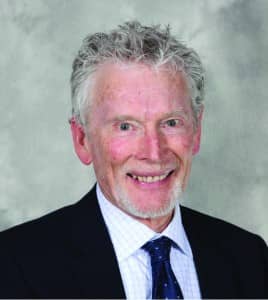Final Word | August 2015 Hearing Review
In June of this year, I attended a portion of the Hearing Loss Association of America (HLAA) convention in St Louis. Members of the group commonly are individuals who have difficulty hearing, and may be looking for solutions to serve their needs in that regard. Their interests may be focused on legislation, access to affordable care, or information on products and services.
A topic on the panel that I participated in included a brief overview of MarkeTrak9 (MT9),1 a report that was featured as the cover article of the June 2015 edition of The Hearing Review. As with the earlier MarkeTrak reports, MT9 is dense with statistics about the people who may need services and devices, their opinions, and levels of satisfaction with performance in the real world. The audience was attentive, but each member had their own experiences, and many shared their concerns with us.
Satisfaction is not an easy thing to nail down. We tend to think of the patient in the framework of their journey, and assume that better hearing is their goal. We may look at their test results, listen to their complaints, and proceed with our treatment plan, which is typically a bucket of familiar things that we do. We may think that audibility is the first thing we need to take care of—and that isn’t a bad place to start. Is our assumption about audibility correct, and will sufficient audibility buy satisfaction?
Of course, whenever possible, we strive to provide audibility in as wide a bandwidth as possible, while also setting up the hearing aids to not exceed levels that will create discomfort or distortion. That said, everything we do with hearing aids creates some distortion: through amplitude changes, waveform envelope changes, and frequency resolution as a result of feedback management or noise reduction. Better stated, our goals might include audibility, comfort, and as little noticeable distortion as possible.
With respect to satisfaction, we can look at MarkeTrak 9 to view overall satisfaction, as well as lifestyle-dictated specific listening situations. In general, the reports of satisfaction are more favorable with newer hearing aids. This may be because the memory of poorer performance unaided, or with old poorly working hearing aids is still fresh, or it may be that performance is, indeed, better.
Satisfaction is not as simple as we might think because of the subjectivity of the concept. A hearing aid wearer may be receiving great benefit from hearing aids in terms of audibility and comfort, but still not hear well in certain situations where they really want to hear.
I’ll never forget a family matriarch patient of mine describing a big family gathering where she had been seated in a place of honor at the head of the table. She lamented that she could hear only the people at her end of a table of 12, and that she was not satisfied with her new hearing aids. In fact, there were many situations where she heard much better, and was satisfied. It was this celebratory dinner where she decided she was dissatisfied.
She could just as well have said that she wasn’t satisfied with my counseling because I hadn’t asked the right questions and given her strategies for how to cope with that difficult listening situation. It was my job to make sure she understood the limitations of her hearing in difficult situations, and I didn’t make that clear. If I had asked her at any time before the one bad experience, her answer about satisfaction would likely have been more positive.
This anecdote illustrates the difficulty of defining satisfaction. When do we ask the question, and how do we ask it?
Is it our job to shape the consumer’s perception of how they feel about the hearing aids? I think we should. Because of the transient nature of satisfaction, users may need to be shown and reminded of their good and not-so-good experiences with hearing aids, and given strategies for how to cope with the difficult situations.
Today’s technology is better than what we had 3 or 5 years ago. Noise reduction algorithms and connectivity capabilities have dramatically changed how people may make use of their hearing aids. At the same time, we are dealing with auditory systems that are altered by age and pathology to an extent that we cannot restore normal performance for them.
The Final Word? Complete satisfaction may be elusive in the work we do. We want to help our patients define what it is that they want. They may only know that they are annoyed by their inability to understand what is said by certain people in certain environments. If we approach the problem with them, and build an approach that they see is unique and specific for their needs, it may help shape their perception of the outcome.
We may want to poll our patients more frequently about how they are doing. Instead of asking a single question at 14 or 30 days, maybe we need a way to look at their feelings about their performance more often during the early experiences with their hearing aids. Some may be unhappy that we didn’t tell them about telecoils, or that the hearing aids and the associated services cost more than they think they should, but we may be able to help them appreciate the good outcomes they are enjoying.
References
-
Abrams HB, Kihm J. An introduction to MarkeTrak IX: A new baseline for the hearing aid market. Hearing Review. 2015;22(6):16. Available at: https://hearingreview.com/2015/05/introduction-marketrak-ix-new-baseline-hearing-aid-market
Dennis Van Vliet, AuD, has been a prominent clinician, columnist, educator, and leader in the hearing healthcare field for nearly 40 years, and his professional experience includes working as an educational audiologist, a private-practice owner, and VP of audiology for a large dispensing network. He currently serves as the senior director of professional relations for Starkey Technologies, Eden Prairie, Minn. Correspondence can be addressed to HR or: [email protected]
Original citation for this article: Van Vliet, D. The Final Word: A Measure of Success. Hearing Review. 2015;22(8):50.?





